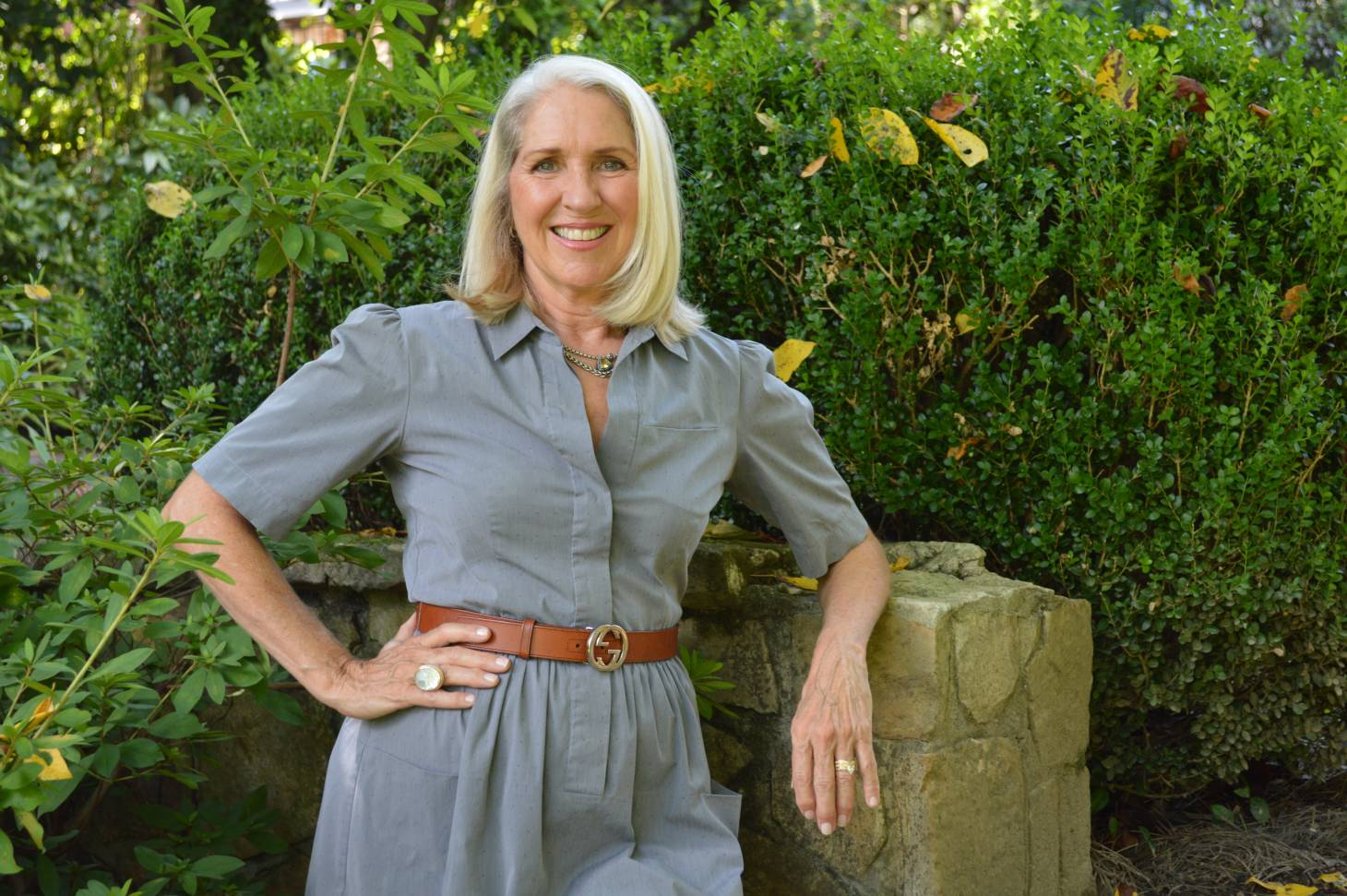Looking ahead to 2020, the retail real estate industry faces plenty of uncertainty — from what will or will not happen in the U.S. political sphere to the question of whether a long-predicted downturn will finally occur and scuttle global growth.
There surely seems to be little certitude among bankers; last fall the Promontory Interfinancial Network published the results of a survey in a report titled Bankers Split: Nearly Half See No Recession Until After 2020. Indeed, of the 518 U.S. lenders the firm surveyed, 47 percent predict that the next recession will begin in 2021 or later; the rest see one beginning this year.
Goldman Sachs issued a report in November asserting that the worst of any global slowdown could in fact be in the rearview mirror. Likewise, CBRE analysts placed their bets on continued economic expansion. The firm’s 2020 Real Estate Market Outlook cites a robust job market, strong consumer confidence and low interest rates. “Trends likely to gain momentum in 2020 include developers converting malls to mixed-use complexes; Generation Z boosting traffic at retail centers; and health-and-wellness uses taking more retail space,” CBRE notes in its report. “[Total commercial real estate] investment volume should reach between $478 billion and $502 billion, on par with the prior two years and making it one of the strongest years on record.
SCT asked experts from several disciplines to describe subjects that are top-of-mind for them in the New Year. The list includes the expansion of food, beverage, entertainment and health-and-fitness concepts; the arrival of Generation Z in the workforce; the evolution of specialty leasing at open-air properties; continued development of mixed-use projects in suburban settings; and the shift toward high-touch customer service among clicks-to-bricks and traditional retailers alike. As befits any futuristic musings these days, AI-powered facial-recognition scanners and aisle-cruising retail robots also made the list.
Food & beverage with Cushman & Wakefield's Michael Traud
Food halls, bars and restaurants are getting better all the time — a trend that is creating opportunities for landlords in markets large and small, says Michael Traud, who joined Cushman & Wakefield’s specialty food-and-beverage team last fall as a project-management director.
Traud can speak about the restaurant business from his own diverse experience: He has cooked with Marc Vetri and Jeff Michaud (James Beard Foundation chef’s award winners) at their Philadelphia restaurants and also founded the internationally known Philly Chef Conference. With degrees in both law and culinary arts, Traud has taught college classes at Drexel University, in Philadelphia; and at the American University of Rome, in Italy. “There was a time in my life where I was prepping the pasta for Marc Vetri in the morning, teaching a three-hour hospitality-law class at Drexel University and then coming back and working the pasta station at the restaurant,” he said.

Michael Traud
Traud now advises clients seeking to develop food halls, woo top chefs or create special events that help drive traffic and sales. Having started in major cities, the trend toward epicureanism is spreading to secondary and tertiary markets, he notes. “I see an increase in food-and-beverage quality and specialization across the United States,” Traud said. “Food now has a central place in our culture. It’s what people post pictures of on Instagram and watch on Netflix. Even in smaller markets, there’s this influx of people who want more than the standard fare.” As a result, landlords in the suburbs and the less-populated cities will have more opportunities in the year ahead to work with award-winning chefs, many of whom are fleeing the cost of living in places like downtown San Francisco or Atlanta, Traud says.
He cites Inner Rail, a 7,000-square-foot food hall that opened last October at the mixed-use Aksarben (Nebraska spelled backwards) Village, in Omaha, Neb. That project, on which Traud is a consultant, includes such operators as Kathmandu Momo Station, Maharani Indian Kitchen, Sofra Creperie and The Bánh Mì Shop. “You don’t think of Omaha as this big food culture,” Traud said, “but with all of these different cuisines, Inner Rail really captures the imagination. It’s a destination.”
Having pored over hospitality-sector legal agreements, cooked in Italy and South Korea, and forged a network of chefs and food journalists through the Philly Chef Conference, Traud now aims to leverage his expertise to help local landlords and restaurateurs strike the right balance. “At a lot of these projects, the big question is, ‘What would be best for the local community?’ ” he said. “You want to create places where people can go, eat, spend time and really get to experience different cuisines offered in an authentic fashion.”
Generation Z with Poline & Associates' David Poline
As more members of Generation Z enter the workforce in 2020, the shopping center industry will get a chance to find out if these young people truly are distinct from their Millennial predecessors, says David Poline, president and CEO of Atlanta-based recruiting firm Poline Associates. “We’re seeing the beginnings of this generational shift now, and it is fascinating,” he said. “With the Millennials, we occasionally heard a horror story along the lines of a 22-year-old kid coming into a meeting, never engaging with anyone in the room and instead just staring at their phone, sending out texts and emails. So far, at least, we’re not hearing this as much about Gen Z.”

David Poline
That may sound counterintuitive: With birthdates starting in the late 1990s, members of Gen Z are typically described as tech-savvy multitaskers whose habits are deeply interwoven with the accelerated growth of the Internet and social media. But one of the theories about Gen Z, Poline notes, is that its members find novelty in experiences that previous generations may have taken for granted, such as chatting with co-workers face-to-face or being in brick-and-mortar offices or shopping centers. “Maybe it’s only a hope, but it will be interesting to see if being immersed in technology from an early age, this new generation may have finally developed some appropriate boundaries and good habits around finding the right time and place for technology,” Poline said.
Over the next few years, more Gen-Z members will either take internships or land their first jobs in retail real estate. “So far, we’re hearing that Gen Z may not be as prone to rapid movement from job to job,” Poline said. “Our clients are telling us that, based on their initial observations, their Gen-Z employees seem a bit more likely to want to start someplace, grow their skill set and build something lasting. As this generation matures, we will be intrigued to see if that continues to play out.”
Specialty leasing with ShopCore Properties' Lindsey Major
Specialty leasing is a potential growth area for open-air shopping centers in 2020 — but only if retailers actually know about the opportunity to take short-term space at such properties. “There can be some confusion, especially in smaller markets, where local business owners don’t understand that open-air landlords are willing to do temporary, short-term leasing,” said Lindsay Major, senior director of ancillary income at Chicago-based ShopCore Properties.
The company owns about 20 million square feet of real estate, mostly community, power and grocery-anchored shopping centers in the U.S. (Formerly called Excel Trust, ShopCore was acquired by Blackstone in 2015.) Thanks to common areas full of carts and kiosks, everyone knows that specialty leasing is an option at malls. At open-air centers, however, simply getting the word out about specialty leasing can make a big difference, says Major.

Lindsay Major
Last March, ShopCore launched a program that it calls MyShop, designed to do precisely that. “Our call volume has increased significantly, and we’re generating more leads and doing more in-line deals,” Major said. “The owner of one clicks-to-bricks boutique started working with us after she spotted MyShop signage in a store window. She had been toying with the idea of having a brick-and-mortar location.”
In addition to using signage, ShopCore relies on Instagram and other online channels to promote the program. Especially in the suburbs, specialty leasing is becoming a bigger part of open-air tenant mixes, Major says, as the likes of Adidas, SmileDirectClub and T-Mobile tour the country to bolster their brands. “Pop-ups have been a popular concept for some time now at lifestyle centers [and in] malls, and in urban areas like SoHo in New York [City], or West Hollywood, in Los Angeles,” Major said. “But we’ve seen even more growth in the suburbs. It has been really exciting for us.”
In the year ahead, Major will be watching to see how the trend evolves. “I’m also interested to watch what happens with store-within-a-store concepts,” she said. “We’ve seen more of that as brands and retailers come together to create in-store pop-ups. It’s everything from Macy’s Story to the Birchbox-Walgreens holiday pop-ups.”
Densification with Steve Grimes
For RPAI (Retail Properties of America Inc.), density is the name of the game moving forward. “Our main focus right now is to capitalize on the mixed-use opportunities that we have in our portfolio,” said Steven Grimes, CEO and director of the Oak Brook, Ill.–based REIT. “What we’re looking for is that urban feel in a suburban context.”
As an initial part of this strategy, Grimes says, RPAI aims to spend about $350 million to ramp up three assets that are ripe for higher density: One Loudoun Downtown and Carillon, both in Washington, D.C.; and Circle East, in Towson, Md. At One Loudoun, the firm and its investment partner, McLean, Va.–based Kettler, are adding about 70,000 square feet of retail and office space and nearly 400 apartments to the existing 468,000-square-foot mixed-use center. Last summer, meanwhile, the company demolished 300,000 square feet of vacant gross leasable area at Carillon (formerly the open-air Boulevard at the Capital Centre) to make way for 100,000 square feet of medical offices and 350 multifamily rental units. And the REIT is negotiating with food, health, beauty, fitness and other chains that seek to join the redevelopment of Circle East, where move-ins are set to begin at nearly 400 AvalonBay Communities–owned apartments.
These days, mixed-use and lifestyle centers account for 34 percent of RPAI’s 104-property portfolio; the rest are primarily neighborhood and community centers with a high ratio of in-line tenants to anchor stores, says Grimes. “Having more small-shop space gives you greater opportunity to diversify your tenant base and provide a different type of an offering,” he said. RPAI has also sought to keep lower-performing retailers off its top 20 list of tenants. Last October at The Shoppes at Union Hill, in Denville, N.J., RPAI replaced Pier 1 Imports with specialty grocer Trader Joe’s. At Main Street Promenade, a mixed-use center in Naperville, Ill., the firm backfilled a vacant J.Crew with a Lululemon Athletica, in a deal announced last November.

Analysts and investors have sometimes prodded RPAI to fund development projects by selling off real estate, Grimes says. But in his view, selling properties that make money now — and which could be ramped up later through densification — is shortsighted. “When you have the means to fund development through less than 3 percent debt outstanding on your line of credit, at current interest rates,” said Grimes, “why would you sell well-performing, income-producing assets that are carrying the day from an earnings standpoint?”
Having sold $3 billion in assets and acquired $2 billion more since 2013, RPAI’s positioned portfolio set a record in the third quarter by achieving a same-store leasing rate of 95.4 percent. “The narrowing of our asset focus, both in terms of mixed-use and neighborhood and community centers, has positioned us for growth in 2020 and beyond,” he said.
Customer service with Bayer Properties' Libby Lassiter
Coldwell Banker Commercial published the results last fall of a survey of 2,000 American shoppers, nearly 100 percent of whom reported having bought merchandise in physical stores over this past year. Moreover, nearly 70 percent of the respondents said they looked specifically for in-store experiences, which comes as no surprise to Libby Lassiter, co-president of Birmingham, Ala.–based Bayer Properties. “People are seeking a more hands-on approach when visiting physical stores,” she said. “From gift recommendations to outfit selections, consumers crave personalized assistance to guide their experiences from start to finish.”
This is why Lassiter says she expects to see more-tailored approaches to customer service on the part of retailers this year. The best operators aim to create a seamless experience by investing in personnel with expertise in such fields as technology and inventory management, she says. As Bayer Properties courts forward-thinking retail concepts, it looks for operators that aim to take personalized service to a new level, says Lassiter. “There is a major difference between a salesperson and a personal in-store shopper,” she said.

Libby Lassiter
To that end, Lassiter is keeping an eye on Lafayette 148, a 23-year-old brand that opened a service-focused store on New York City’s Madison Avenue last year. The Townhouse, as that Madison Avenue flagship is called, offers such conveniences as personal stylists and private shopping sessions, complimentary on-site tailoring and same-day delivery of made-to-order items. “This is an excellent example of how retailers can make the shopping experience more enjoyable and accessible for on-the-go consumers,” Lassiter said.
Such digitally native retailers as Allbirds, Bonobos and Casper have helped drive the trend toward customized service, says Lassiter. “It has been proven that more than half of the purchases made from these types of retailers happen in-store over online,” she said. “Why? Put simply, people want people, and because of this, retailers and developers who treat retail as a service will continue to succeed.”
Mixed-use with Hines' Nick Garzia
Retail is rapidly emerging as the most critical part of getting mixed-use right, says Nick Garzia, Southeast region director of retail leasing at Hines, a global real estate firm. Fenton, a new Hines mixed-use development in suburban Raleigh, N.C., is a prime example. “We see the retail component as the energy driver that sets the stage for the entire project,” Garzia said. “We’re prioritizing the street-level experience and curating a mix of apparel, entertainment and regional-chef talent. We’re paying close attention to how the retail and restaurant offerings complement the office and residential components.”
The first phase of the project, slated to open in the fall of 2021, includes 340,000 square feet of retail, including anchors Wegmans and CMX CinéBistro, as well as Bailey’s Fine Jewelry, Free People and Sephora. Restaurants from noted chefs Scott Crawford, Ford Fry and Steve Palmer add to the project’s city-in-the-suburbs feel, says Garzia. “We expect retail to continue driving the success of major mixed-use projects like Fenton,” he said. “It will play a critical role in the overall guest experience and attract office-tenant employers seeking a multiuse, communal experience.”

Nick Garzia
Despite the high-profile struggles of work-space provider WeWork, co-working will also contribute to retail environments this year, Garzia says. Last year Hines teamed up with co-working firm Industrious to create Hines2, which marries Hines’ property-management capabilities with the Industrious business model and brand. “It’s an amenity-driven workplace experience that will be installed in select current and future Hines mixed-use properties,” said Garzia. Among these is Atlantic Station, a 138-acre mixed-use development in Atlanta. Hines is also exploring ways to include co-working in its office developments at T3 West Midtown.
Lively concepts like Bowlero (a gastro pub with bowling and video games that is slated to open at Atlantic Station) will also keep growing, says Garzia. He cites Putt Shack (a mini-golf and dining concept) and Punch Bowl Social (which offers craft cocktails, arcade games, karaoke and food) as promising tenants in this category as well. “Technology will increasingly put pressure on retailers to offer experiences consumers cannot get from their homes,” Garzia said. Meanwhile, Hines is also reinvesting in its properties in ways that further improve the experience, such as renovating the park at Atlantic Station. “Our goal is to entice guests to convene here again and again,” Garzia said.
Acquisitions with Stanbery Development Group's Marc Hays
Stanbery Development Group has built a total of 12 lifestyle centers and other projects over the past 19 years. But though the firm still looks for developable sites, its focus of late is on acquiring properties and shifting them into higher gear, says Marc Hays, a Stanbery Development partner who oversees acquisitions and leasing. “That could involve tearing down part of the property, like a vacant Kmart box, and then rebuilding it, or redoing the facade and bringing in a better grocer,” he said. “In other cases, maybe a family owns that asset and they have been sitting back, enjoying the cash flow and not putting enough reinvestment into it. That gives you the opportunity to come in and spend some real dollars to drive rents and, ultimately, value.”
Redevelopment was precisely the idea when Stanbery acquired Big Lots–anchored Park & Starkey Plaza, a 63,000-square-foot neighborhood center in Seminole, Fla., last fall for some $5.2 million. This year Stanbery will continue to scour Florida, the mid-Atlantic and other Eastern markets in search of redevelopment and repositioning plays, says Hays.

Marc Hays
In support of this approach, Hays closely tracks the expansion strategies of such grocery chains as HEB, Kroger, Lidl, Lucky’s Market, Publix and Sprouts Farmers Market. “If there is a single sector that is driving redevelopment in today’s properties, it is probably grocery,” he said. While Hays continues to monitor tenants in such fast-growing categories as food, health, beauty, wellness and fitness, he underscores that store-count growth is not the same thing as performance. “A few years ago, quick-service pizza tenants were coming out of the woodwork,” he said, “but now many of those have gone by the wayside.”
In addition to making acquisitions, Stanbury continues to develop new projects. The latest is the mixed-use District at 1515, in Parsippany, N.J., billed as a new downtown for Morris County. In leasing new and redeveloped properties, Stanbery aims for the optimal mix of service, retail and food uses, Hays says. “Our objective is to bring as many people to our shopping centers each day as possible,” he said. “It’s anything you can do to provide interesting social experiences that they can’t replicate at home.”
By Joel Groover
Contributor, Commerce + Communities Today


